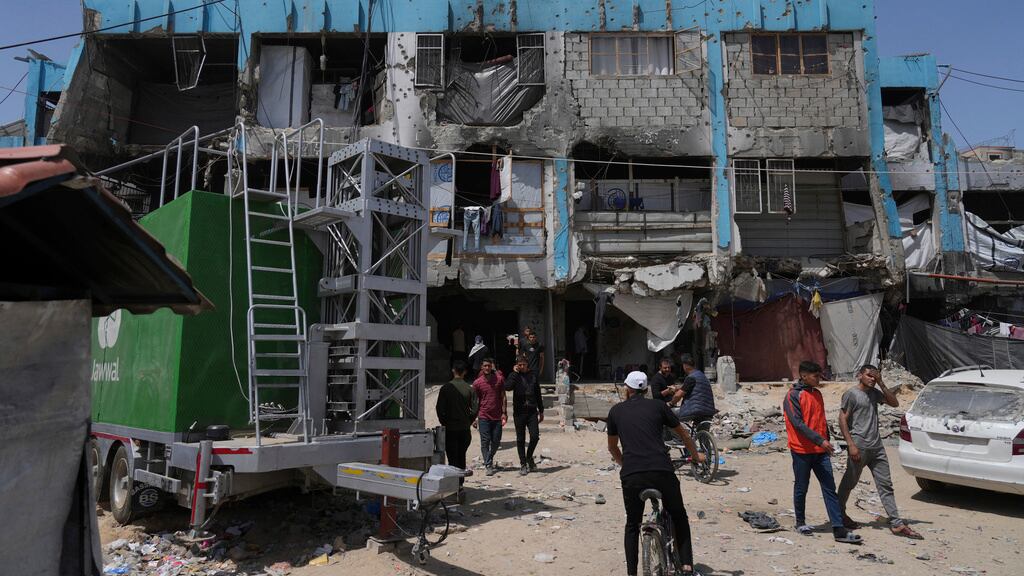DEIR AL-BALAH, Gaza Strip (AP) — Prime Minister Benjamin Netanyahu announced on Wednesday that Israel will establish a new security corridor through Gaza.
PUBLICIDAD
In a statement, Netanyahu described it as the “Morag Corridor,” using the name of a Jewish settlement that once existed between Rafah and Khan Yunis, suggesting that it would extend between the two southern cities.
PUBLICIDAD
“We are increasing the pressure little by little so that they return our hostages to us. The more they refuse to give them back, the more we will increase the pressure until they do so,” Netanyahu declared.
Hours earlier, the Israeli Defense Minister stated that the military operation in the Gaza Strip is expanding to take “large areas.”
The Israeli offensive in Palestinian territory is “expanding to crush and clean the area of terrorists and terrorist infrastructure and capture large areas that will be added to the security zones of the State of Israel,” said Defense Minister Israel Katz in a written statement.
What is Israel looking for with the new security corridor?
The Israeli government has long maintained a buffer zone just inside Gaza along its security fence, which has expanded significantly since the war began in 2023.
Israel says the buffer zone is necessary for its security, while the Palestinians see it as a land grab that further diminishes the narrow coastal territory, home to around 2 million people.
Katz did not specify which areas of Gaza would be captured in the expanded operation, which includes the “extensive evacuation” of the population from combat areas. His statement came after Israel ordered the complete evacuation of the southern city of Rafah and nearby areas.
Netanyahu has stated that Israel intends to maintain an indefinite, but unspecified, security control over the Gaza Strip once it achieves its goal of crushing Hamas.
The Defense Minister urged the residents of Gaza to “expel Hamas and return all hostages.” The armed group still holds 59 captives, of which 24 are believed to be alive, after most others were released in ceasefire agreements or other deals.
Since the ceasefire was broken last month, when Israel ordered people to move and expanded its operational areas, the exclusion zones in Gaza now constitute more than 60% of the strip, said Olga Cherevko, spokesperson for the UN Office for the Coordination of Humanitarian Affairs.
Exclusion zones include the military zone in the Netzarim corridor - an area created by Israel that separates the north from the south of Gaza - and the expanded buffer zone and evacuation areas.
Criticism from the families of the hostages
The Hostage Families Forum, which represents the majority of the families of the captives, said it was “horrified to wake up this morning to the announcement by the Defense Minister about the expansion of military operations in Gaza.”
The group stated that the Israeli government “has the obligation to free the 59 hostages from Hamas captivity, to explore all possible channels to advance an agreement for their release,” and emphasized that every day that goes by puts the lives of their loved ones at greater risk.
The forum asked the Trump administration and other mediators to continue pressuring Hamas to release the hostages.
Children die in attack on United Nations building
Israel continued to strike the Gaza Strip with overnight airstrikes that killed 17 people in the southern city of Khan Younis. Another 15 people died in an attack in the northern part of the strip on Wednesday, according to officials at hospitals where the bodies were taken.
Officials from Nasser Hospital said that among the bodies of 12 people killed in a nighttime airstrike taken to the hospital, there were five women, one of them pregnant, and two children. Officials from the European Hospital in Gaza said they received five bodies of people killed in two separate airstrikes.
Later on Wednesday, officials from the Indonesian Hospital said that an Israeli attack on a building of the UN agency for Palestinian refugees, or UNRWA, in the Jabaliya refugee camp in the northern Gaza Strip killed 15 people, including nine children and two women.
Juliette Touma, spokesperson for UNRWA, said that the site was not functioning as a clinic when it was hit, but was being used as a shelter for displaced people, with around 735 individuals from 160 families being housed there.
The Israeli army said it attacked members of Hamas in the area, adding that they were hiding inside “a command and control center that was being used to coordinate” armed activities and served as a central meeting point for the Palestinian group.
